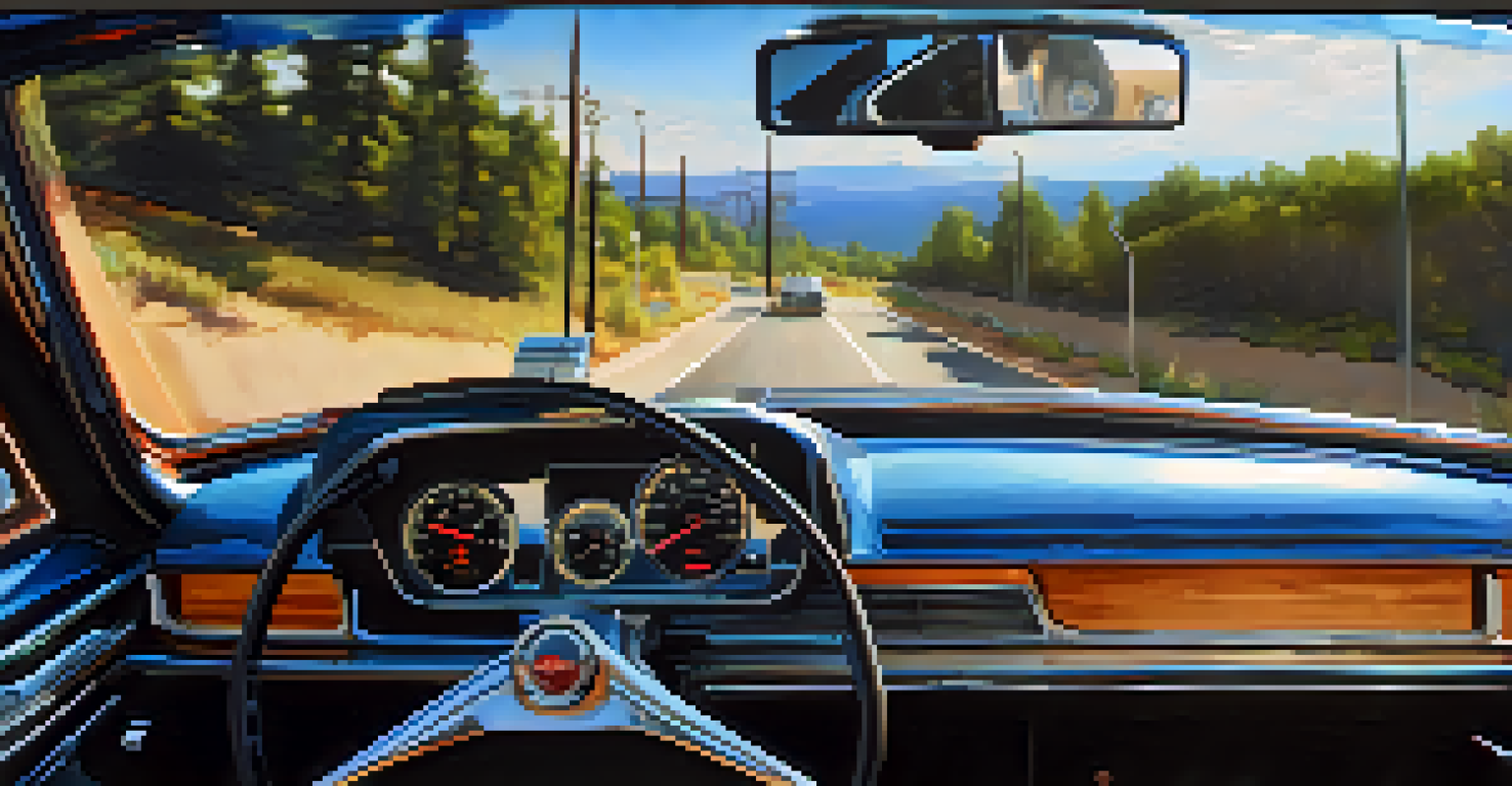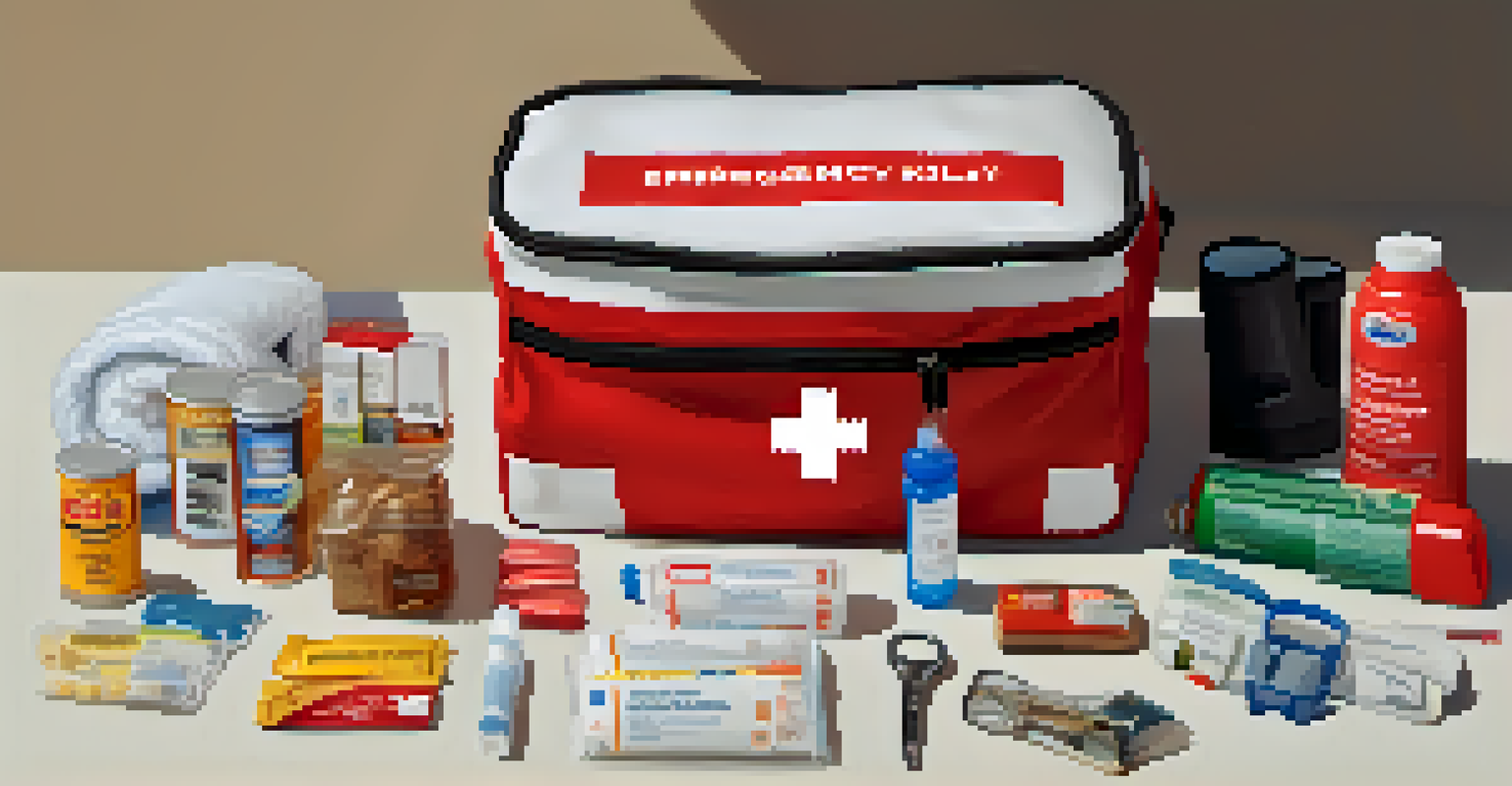How to Prepare Your Vehicle for a Long Road Trip

Start with a Comprehensive Vehicle Inspection
Before hitting the road, a thorough vehicle inspection is crucial. Begin by checking the oil level, coolant, and other vital fluids to ensure everything is topped off. Don't forget to examine your brake fluid, windshield washer fluid, and transmission fluid, as these play essential roles in your vehicle's performance.
The journey of a thousand miles begins with one step.
Next, take a close look at your tires. Inspect the tread depth and ensure they are properly inflated according to the manufacturer’s recommendations. Under-inflated tires can lead to poor fuel efficiency and increase the chances of a blowout, which is the last thing you want on a long trip.
Finally, check your battery. Look for any signs of corrosion on the terminals and ensure the battery is securely mounted. If your battery is older than three years or showing signs of weakness, it might be wise to get it tested or replaced before you embark on your adventure.
Check Your Lights and Signals
Working lights and signals are key to safe driving, especially on long trips where you may encounter different weather conditions and times of day. Start by checking all headlights, taillights, brake lights, and turn signals to ensure they function properly. Replace any burnt-out bulbs before your journey begins.

It’s also a good idea to clean your headlights if they are foggy or discolored. This can improve visibility significantly, especially at night or in poor weather. Consider using a headlight restoration kit if the problem is severe.
Conduct a Vehicle Inspection
Thoroughly check fluids, tires, and battery to ensure your vehicle is road-ready before a trip.
Lastly, don’t forget to check your emergency flashers. These lights are essential for alerting other drivers if you need to pull over or if there's an issue with your vehicle. Ensuring they work can keep you safe and visible on the road.
Test Your Brakes for Safety
Brakes are one of the most critical components of your vehicle, especially for long road trips. Start by listening for any unusual sounds when braking, such as squeaking or grinding. These could indicate that your brake pads are worn and may need replacement.
Preparation is the key to success.
Additionally, check the brake fluid level in the reservoir. If it’s low, it may be time for a brake inspection, as low fluid could signal a leak or other issues in the braking system. Don’t take chances with your safety; it’s better to be proactive than reactive.
Finally, consider testing your brakes in a safe area before you embark on your trip. This will give you the peace of mind that your brakes are functioning properly and can handle sudden stops if necessary.
Ensure Your Fluids Are Topped Off
Keeping your vehicle’s fluids at optimal levels is essential for a smooth road trip. Besides oil and coolant, check the power steering fluid, brake fluid, transmission fluid, and windshield washer fluid. Each of these plays a vital role in the smooth operation of your vehicle.
If any fluids are low, top them off before you leave. It’s a good practice to carry extra oil and coolant with you on long trips, just in case you need a quick refill while on the road. This way, you can avoid unexpected stops and keep your journey on track.
Prepare an Emergency Kit
Pack essential items like a first-aid kit, tools, and clothing to handle unexpected situations on the road.
Additionally, consider changing your oil if it’s close to the recommended interval. Fresh oil not only improves engine performance but also helps with fuel efficiency — a critical factor when you’re covering long distances.
Pack an Emergency Kit for Peace of Mind
An emergency kit is your safety net on long road trips. Start by packing essential items such as a first-aid kit, flashlight, water, and non-perishable snacks. Having these items on hand can make a world of difference if you find yourself in an unexpected situation.
Next, include tools for minor repairs such as a jack, spare tire, jumper cables, and basic hand tools. You never know when a flat tire or a dead battery could slow you down, and being prepared can save you time and stress.
Finally, don’t forget to include a blanket and a few extra layers of clothing. Weather can change quickly, and it’s better to be prepared for the unexpected than to find yourself uncomfortably cold or wet during a roadside emergency.
Plan Your Route and Make Reservations
Planning your route can enhance your road trip experience significantly. Use apps or maps to chart out your course, taking into account scenic routes and interesting stops along the way. This can transform a mundane drive into an adventure filled with new sights and experiences.
Don’t forget to make reservations for accommodations, especially during peak travel seasons. Having a place to stay can reduce the stress of searching for last-minute lodging after a long day of driving. It’s always better to have a plan in place.
Plan Your Route in Advance
Chart your course using maps or apps, and make accommodations to enhance your road trip experience.
Additionally, consider checking for any road closures or construction along your route. Being aware of potential delays allows you to adjust your plans accordingly, ensuring a smoother journey.
Prepare Yourself and Your Passengers
Before hitting the road, take a moment to prepare yourself and your passengers for the journey ahead. Make sure everyone understands the itinerary, including rest stops and planned activities. This can help manage expectations and keep everyone on the same page.
Encourage everyone to pack snacks and entertainment for the ride. Whether it’s audiobooks, music playlists, or games, having engaging options can make the miles fly by and keep spirits high during long stretches of driving.

Lastly, make sure to schedule regular rest stops to stretch your legs and recharge. Not only is this good for your body, but it also helps to keep everyone alert and ready for the next leg of the journey.